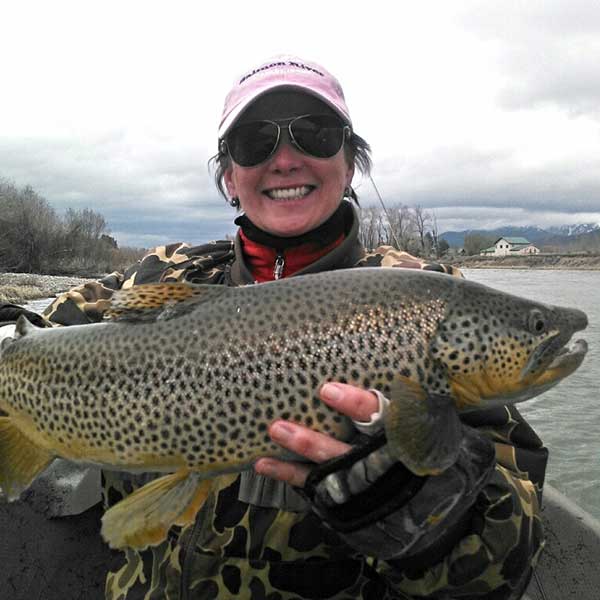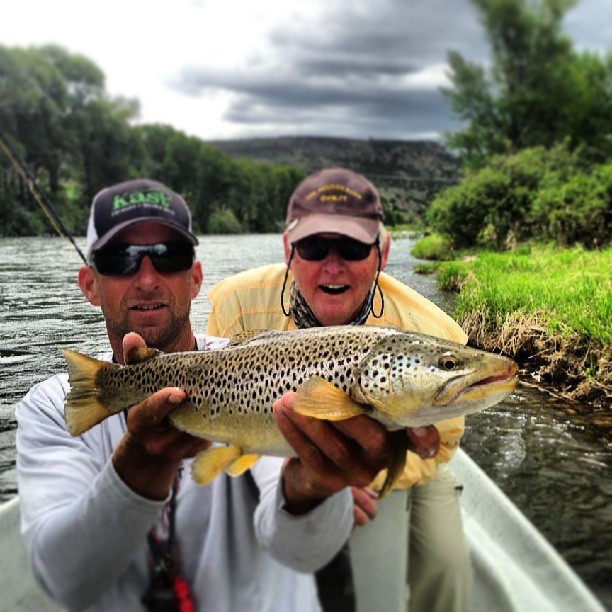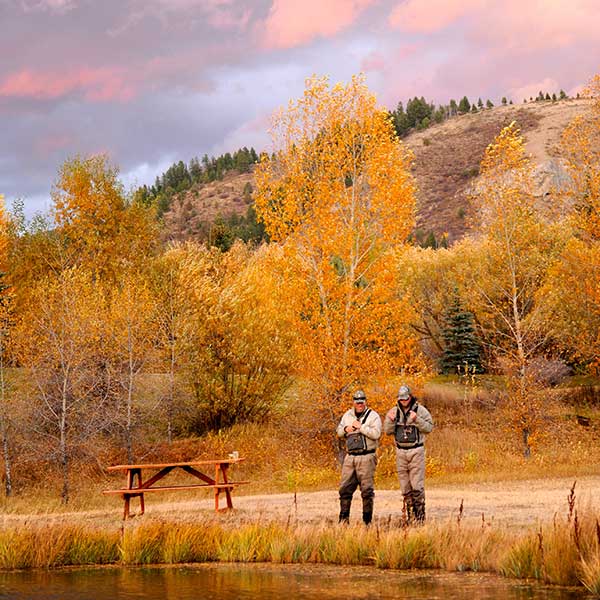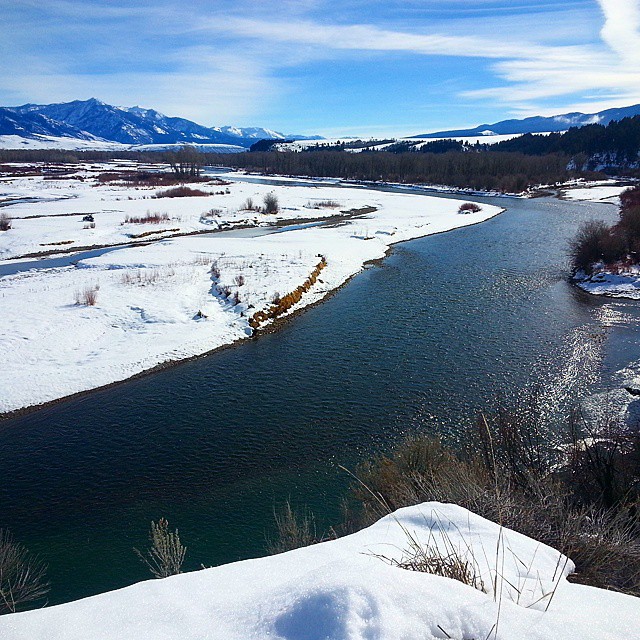South Fork Snake River Fishing Calendar
Here we break down the Snake River fishing conditions for you by season. This will help you prepare your stay at The Lodge at Palisades Creek. If you’re curious about current conditions you can view our fishing report here. It’s updated weekly from May through October. Current river flows can be found here.
Fishing Report
Current River Flow
Spring
Spring fly fishing on the South Fork of the Snake River is all about keeping your eyes on the weather and the water flows. There is a magic window in the Spring where the weather warms up, but the snow melt has not caused the river to rise or get muddy. This window benefits the early bird and can last just a week or up to a month. Deep nymphing is the key as fish are slowly but surely becoming more active and Rainbow and Cutthroat Trout begin their predicted spawn.
The Angler Incentive Program sponsored by Trout Unlimited, Orvis, and the Idaho Fish and Game motivates anglers by placing invisible chips in the snout of rainbows and cutbows. Anglers who catch these species are encouraged to harvest the fish and turn the heads into Idaho Fish and Game. The chip has a corresponding dollar value the angler may receive. There are no limits to size and quantity. This program has been in place for 9 years. Stonefly nymphs, egg patterns, various worm patterns, and bead heads are all staples for this time of year. Rainbows are the bulldogs of the river and jaw-dropping runs and leaps are in store for you. Over the past few years we have really honed our technique and this is sure to bring a trophy to the net.

Summer
The summer brings steady river flows for irrigation. Warmer water temps bring on the hatches of insects that have made the river world famous. Late June brings hatches of yellow sallies, and PMD’s. We have a 3 week window of green drakes in the canyon sections. By early July we start to see the famous Salmon Fly hatch. This is difficult to predict and people from all over try to time their trip with this hatch. It is a sight to see. The fish, after a long winter put much of their weight on during this hatch. It starts in the lower warmer stretches and moves about 4 miles up stream a day, roughly. This is followed soon by our large golden stone hatch(Size 6). PMD’s, sallies and golden stones are the menu for the rest of July and August. Late August brings a mutant stone. This fly has stubby wings, doesn’t fly, and hatches early morning. We “skitter” flies in the morning and set on the aggressive strike. September brings cooler evening temps and cloudy weather causes our blue winged olives to emerge. It’s sensational and has to be witnessed.

Fall
Fall on the South Fork of the Snake is one of the best kept secrets in trout fishing. Green gives way to orange and yellow. Frenzied anglers thin and your favorite run has only osprey with which to compete. Water flows are approaching their winter’s meandering pace. Best of all, trout succumb to nature’s demand to fatten up for the long months ahead. PMD hatches wane and chilly days trigger Blue Winged Olive hatches to carpet the river. Although waders may be the norm, the dry fly fishing is extraordinary. Fish forego their inhibitions and spend lazy days gorging in foam pools, eddies, and along still banks.
The fall is also time to find big brown trout as they gear up for their spawning call of duty. Guides get restless at night thinking of dark days and big streamers. The voracious appetite of the brown trout coupled with aggression of the impending spawn forces an angler to watch every strip for that rod-shattering strike. Some of our favorite streamer patterns include Muddlers, Zonkers, and weighted marabou flies in white and olive, brown and yellow, and black. Ask any angler intimate with the South Fork of the Snake and they will say fall is unbeatable!
Come Cast and Blast!! What could be better than loading a shotgun and a fly rod in your drift boat? The day starts early, before the sun rises. We put on at dusk, float a short distance with spot lights. When we get to our secret bench blinds hidden in side channels of the river we exit for a short walk, the guide serves coffee then throws out a couple decoys. The rest is history as the guide calls birds entering into the decoys, a few hours of sunrise shoot then back into the boat to fish to the take out. We often see flights of Mallards, Widgeon, Blue and Green Winged Teal, Wood Duck and Canadian Geese.

Winter
Winter can provide an exciting day on the river when that itch to cast a fly rod hits. Flows are very low, typically 900-1,200 c.f.s. and an angler can gain access to most of the river by wading. Being careful is crucial as the water is still moving and can dip to 38 degrees.
Trout do not hibernate in the winter, but their metabolism does slow way down and their eating habits drastically diminish. Same is not true for the Mountain Whitefish which will make up the majority of your winter catch, especially if you are fishing nymphs. If you are looking for a tug between powder days, a whitefish can be an exciting and willing participant.
Stonefly nymphs, San Juan Worms, Midge patterns, Bead Heads and Streamers are popular during this season. Focus on slow moving deep runs and on that bright sunny day an angler can be in the midst of trout and whitefish sipping midges on the surface. Fishing normally occurs late morning to early afternoon.

